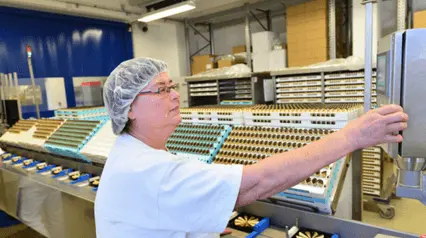What is Little’s Law?
Little’s Law is a theory and formula used to estimate the queuing process in a business. It’s largely seen in Kanban and Agile and can be used to further improve productivity and efficiency within an organization. The formula estimates the average number of items in a queuing system using the waiting time of an item and the average number of items that arrive in the queuing system within a timeframe.
The formula offers a systematic approach to assessing the efficiency of any queuing system. It states that there are only two variables that may affect the time of a queuing system. This gives businesses the opportunity to improve those specific variables to ensure their systems are running as smoothly as possible.
The law can be applied to any queuing and sub-queuing system within a business. It’s widely used in various industries, from food and beverage establishments to manufacturing companies.
Formula
The mathematic equation for Little’s Law is as follows: L = λ x W. In the equation, the variables are as follows:
- L is the average number of items in a queuing system
- λ is the number of items arriving per unit of time
- W is the average waiting time each item spends in a queuing system
Example
To better understand Little’s Law, let’s look at an example. Let’s say you are running a cafe, and you need to determine if you need to add space to optimize your queuing system and if your current establishment can queue up to eight people at a time.
If you have an average of 40 customers per hour and each customer spends around 10 minutes (0.16 hours) in your store, the formula applies like this:
L = 40 x 0.16, or 4.2 = 40 x 0.83.
This means that the queuing area in your coffee shop only queues up to 4.2 people at any given time. When using the formula, you can determine that you don’t need more space in your queuing area as you always have enough space to accommodate the average number of people in the queue.
How Is Little’s Law Used?
Little’s Law breaks down the queuing system into something much simpler with only two variables. This is used to determine whether or not the queuing system has the proper capacity for the number of items or customers in the queue at any given time. While the above example was used to determine if there was more space needed in the queuing system, it can also be used for items in a manufacturing process.
Little’s Law has many applications, which is why it’s useful for any organization looking to streamline its queuing process. If you have a queuing process in your organization, whether that’s in manufacturing, service, or anything else, Little’s Law can be a practical way to assess your queueing system.
How Can It Help a Business?
The biggest way Little’s Law helps businesses is by evaluating the queuing system. A proper assessment of the queuing system opens up doors to streamline production and boost efficiency. This is because you can determine if your queuing system is sufficient for your operations and ensure that everything is in order to keep your business on track.
Having an efficient queuing system offers many benefits for a business. To start, the queuing system allows you to estimate the number of items waiting or the number of customers in line. From there, you can look at your establishment or work area to determine whether or not you can further optimize it.
When the queuing system works fine, everything else will follow. This will allow businesses to build proper schedules, stay on track with their goals, and boost productivity.
Digitize the way you Work
Empower your team with SafetyCulture to perform checks, train staff, report issues, and automate tasks with our digital platform.
Get Started for FreeFAQs about Little’s Law
One thing to remember with Little’s Law is that it only deals with average values. You don’t get exact numbers, which is a very important note since your queuing system won’t always follow the averages.
To increase cycle time in Little’s Law, you have two approaches. You can either increase input or find waste and start working to reduce it. These approaches help shorten the existing queue of works in progress, resulting in reduced cycle times and speedier task completion.
Yes, Little’s Law applies to both tangible goods (e.g., manufacturing, retail) and intangible services (e.g., service operations). For instance, this formula is beneficial for estimating the length of waiting lines in hospitals, banks, and events.
Process Lead Time (PLT) is another term used to describe Little’s Law. This is a useful metric for determining the throughput and speed of any process.




